The Five Elements of Hip Hop and the Cultural Influence Over Five Decades
Whole lotta shoutouts.
For half a century, hip hop came into the world by storm, and has shifted society globally. It is almost impossible for a person in 2023 not to come across some type of hip hop form. This controversial form of expression has transformed into a business, culture, and lifestyle. It has been a topic of discussion socially and politically. Hip hop would not be what it is without the four elements, which are DJing, MCing, breaking, and graffiti writing. However, sources argue that a fifth element exists in hip hop, which is fashion.
1. Disc Jockeying/Producing
Disc Jockeying, also known as “DJing”, consists of controlling the tempo of multiple records. Most of the DJ’s activity takes place in venues where crowds gravitate to, like nightclubs, parties, or weddings. The DJ also develops the beats from other artists vocally and/or instrumentally. This composition of the process is called sampling and mixing. To be a hip hop DJ is like making a smoothie. The DJ can record and produce the beats on his/her own, requiring a drum and bass rhythm, which is the juice, water, or milk and ice. The DJ could then add samples from other artists or samples from his/her own previous work, which is the fruit. When the DJs blend all of those ingredients together, the listener would be able to taste the sensations of every sound wave of the hip hop beat. Queens’s own Marley Marl is credited as the producer who pioneered sampling.
Many producers acquire computerized musical instruments and drum machines like E-mu’s SP-1200 and AKAI’s MPC 3000 to twist, turn and flip, and breakdown songs to various degrees. Mount Vernon’s Pete Rock is known for his virtuous sound using the SP-1200, and was a source for inspiration to Detroit’s J Dilla, who was also stellar with the SP-1200, but mastered his own sound using the MPC 3000. Both cooked unique drum patterns, invented cadences, and mixed samples in mind blowing ways.
On August 11, 1973, during a period of urban decay, infestation of cocaine and heroin, joined with gang violence, arson, hustlers, pimps, prostitutes, police hostility, political corruption and destabilization, 18-year-old DJ Kool Herc and his sister, Cindy Campbell, hosted a back to school party in the basement of their apartment complex located on 1520 Sedgwick Avenue in the South Bronx, New York, with a goal of taking away the depression of the Black and the Latinx youth for one night. At the party, Kool Herc executed something that no other DJ was doing. He developed the breakbeat. The concept of the breakbeat consists of repetition of the “break” of a song. Kool Herc would play back the records by rewinding those records with his hands. The crowd grooved to the discovery that Kool Herc pioneered. That significant night was followed by Grandmaster Flash, the founder of “scratching” and the “break mix,” along with Afrika Baambaataa, a former gang leader that guided his comrades to make early hip hop hits through his own breakbeats, influenced by DJ Kool Herc. All three of these DJs hail from the South Bronx with Caribbean roots (Jamaica and Barbados). 1520 Sedgwick Avenue is now considered “The birthplace of hip hop” for the fact that a new development on how to live in a world of chaos was on the horizon.
Throughout its musical evolution, the beats can be regional. A regular listener can tell where the producer is from or influenced based on how the record sounds. In the East Coast, popular rhythms are boom bap, Jersey Club, and drill (which the sound originated in Chicago, and evolved and grew eastward). In the West Coast, G-Funk and the Hyphy sound dominate the airwaves. Houston identified its sound by pioneering the Chopped & Screwed technique. New Orleans dominates in Bounce. Miami took over with Bass. Atlanta got Crunk, Snap, and share the foundation of the Trap sound with Memphis.
2. Master of Ceremonies
The second hip hop element is the Master of Ceremonies, also known as “MCing.” The MC is responsible for expressing their vocals to a listener, while giving a message, whether it is through speech, lingo, song, storytelling, or all of the above. The most popular form of MCing is rapping. The term “rap” is an acronym standing for “rhythm and poetry.” Rapping requires the use of rhyming in a spoken type of voice in a rhythmic flow.
Although this style of art form has existed in African tradition for several millennia, the modern sound slowly rose to popularity during the 1960s and the 1970s. The Black Arts Movement was in full effect highlighting writers and poets, primarily focusing on Black struggle, Black pride, and Black identity for the Black gaze. Key figures such as Gil-Scott Heron, The Last Poets, Amiri Baraka, The Watts Prophets, and Sarah Webster Fabio trail-blazed the art of rhythm speaking over instrumental patterns.
Early successful rappers to break into the music industry include New Jersey’s The Sugarhill Gang with their 1979 hit “Rapper’s Delight”, making it the first hip hop song ever to make it to the mainstream radio (even though this song was not originally written nor recorded by them and stolen from Grandmaster Caz and The Cold Crush Brothers, representing The Bronx). The Sugarhill Gang’s label mates, the all-female led group The Sequence, followed with their single “Funk You Up” one of the first hip hop all-female hits. The Funky 4 +1 (four men, one woman) put themselves on the map with their 1980 cut, “That’s the Joint.” Sha-Rock, the female MC, stood out for being one of the first female rappers ever to lay a verse on a record. Another successful rapper to break into the hip hop industry was Harlem’s Kurtis Blow, with his solo breakout song “The Breaks”, which was released in 1980. In 1981, the song “Rapture” by New York-based rock band, Blondie, became the first song to top Billboard’s Hot 100 with rap vocals.
Grandmaster Flash and the Furious Five’s 1982 classic, “The Message” combines storytelling with economic issues often overlooked, ignored, and misunderstood from the outside spectacle. In the book Decoded, Jay-Z made a valid point saying
“You could name practically any problem in the hood and there’d be a rap song for you.” - pg. 203
Rappers are hip hop’s prime journalists, using personal scenarios to express their neighborhoods they grew up in, bringing world attention to marginalized communities in ways that outsiders including professional journalists have never even thought about, nor ever discussed before. KRS-One is a primary example who actively used his art form to attempt to elevate the mind body and soul of his community.
Female MCs such as MC Lyte, Yo-Yo, Salt ‘n Pepa, Eve, Roxanne Shanté, Monie Love, Sister Souljah and Queen Latifah, and more recently, Noname, have challenged misogynoir within male dominated communities, including the hip hop space itself, building a powerful following while vocally analyzing psychological patriarchal consciousness.
From the masculine or feminine perspective, rapping goes from a range of topics - to partying, to love, to sex, to clothes, to cars, to crime, to social and political issues, to triumph, to tragedy, to the poetic confidence of self, to the personal struggle of self, to the knowledge of self, to death, to spirituality, to regular living, etc. in forms of storytelling, and structural syntax. The language could be simple and straight to the point with literal meaning, or expressed through metaphorical codes.
Rappers often battle each other with words often like a boxing match with spectators witnessing blow-for-blow bars with myriad wordplay. Rappers and DJs go hand-in-hand because the DJ would make the beats and the rapper would eventually rap over them. Rapping is arguably the most popular element out of all of the hip hop elements.
3. Breaking
The third element of hip hop is breaking, also known as “breakdancing.” The term “breakdancing” represents dancers dancing during the “break” of the song. DJ Kool Herc came up with the term. Breakdancing males are called “B-Boys.” Breakdancing females are called “B-Girls.”
Breaking requires a large amount of athletic movement of the body. B-Boys and B-Girls usually tend to break a sweat while participating in this activity. Forms of breaking include “uprocking” which is the beginner’s move for the breakdancer. This move requires movement on the legs and the feet. “Downrocking” consists of body movement towards the ground. “Power moves” involve motions that could be acrobatic, and “freezing” is used for balance, pause, and pose.
Before these terms were stamped, certain styles of breaking have already existed amongst African traditions for centuries. Early visual recordings of breaking go back to the early decades of the 20th century, highlighting talented skills associated with tap dancing, jazz and swing. During the 1960s, James Brown’s electrifying presence onstage provided insight on breakdancers and became a global pop phenomenon for the following years.
When breakdancing broke into the hip hop scene, numerous crews, but not all, were gang members. Instead of fighting, they would battle each other with dance. Whichever crew had the best moves were the winners, and earned respect.
Noteworthy breaking moves are “popping” and “locking” which originated in the Bay Area of California. These moves require the dancers to jerk, freeze and relax the limbs of their bodies to the rhythm, often in freestyle fashion. The Lockers - founded by the infamous choreographer and singer, Toni Basil and Don “Campbellock” Campbell, are considered pioneers for the locking style, while the Electric Boogaloos pioneered the “popping” style. Both crews hail from California, representing Long Beach and Fresno, and started gaining national attention during the 1970s, after showcasing their skills on televised cultural incubators such as Soul Train and Saturday Night Live.
Fred Berry, aka “Rerun” from the popular ‘70s sitcom, What’s Happening!!, was a member of the Lockers, and had numerous dance numbers on the show. His trademark moves stamped a significant legacy to his name.
Although this particular reverse sliding technique has proven its existence in the past, The Lockers and the Electric Boogaloos were responsible for modernizing the moonwalk, which was later emulated by the highly elite choreographer Jeffrey Daniel, who was cool with both crews. Michael Jackson peeped game, mastered the technique, and introduced the move on the 1983 nationally televised special, Motown 25: Yesterday, Today, Forever. 34 million people watched Jackson do the moonwalk live for the first time on screen. Michael Jackson shifted and shook dance culture and hip hop culture in seconds.
Jackson was heavily inspired by the popularity of breakdancing cliques and their predecessors as he was capable of mastering and innovating moves from previous street dancers while watching them from the sidelines and consistently working with them. The Electric Boogaloos were importantly responsible for choreographing “Thriller” and “Beat It” which both became galactic world-changing music videos, setting the tone for dance sequences for pop stars going on forward. Videos and live performances that were presented by artists afterwards, featuring mass dance breaks, often use “Thriller” and “Beat It” as references - a trend that is still very much live in effect.
Other forms of breakdancing consists of acrobatic moves, including backflips, corkscrews, handstands, and headspins.
Notable dancers who contributed to the popularity of breakdancing on the acrobatic side, include the Rock Steady Crew, hailing from New York, and gained an international following participating in battles and sessions by touring all over the world. Crew members were featured in 1983’s film Flashdance, and 1984’s Beat Street, both choreographic cult classics. Breakin’, another classic hip hop motion picture, primarily focused on Los Angeles’s B-Boy and B-Girl scene. This film featured trendsetting figures including Boogaloo Shrimp, Special K, and the late great Shabba Doo. These movies became remarkably impactful, and opened up a genre door for new generations, paving the way for dramas centering dance and hip hop such as 2003’s Honey, 2004’s You Got Served, 2007’s Stomp the Yard, and the Step Up franchise.
In the 1990s, The Fly Girls gained traction on the pivotal sketch comedy series, In Living Color. While incorporating breaking traditions, their organized dance sequences sparked variety, dedication, and swagger, as they flawlessly flowed over hip hop records. Numerous careers have catapulted because of the Fly Girl scene, evolving into household names. Carrie Ann Inaba, Lisa Joann Thompson, and Jennifer Lopez were Fly Girls early in their careers. Rosie Perez was the choreographer for the Fly Girls for the first four seasons.
Different forms of breaking exist throughout American regions. For instance, in Los Angeles, “krumping” is an aggressive style with the requirement of body shaking. Tommy the Clown is known for pioneering the style and encouraging the youth to add their own kick to it. Storm DeBarge and her friends including BoomSquad, currently lead a new generation for this composition with their unique and influential style. In 2022, DeBarge took on a role for directing the choreography for Super Bowl LVI’s halftime show set in Inglewood, with Dr. Dre, Snoop Dogg, Kendrick Lamar, Mary J. Blige, and Eminem as headliners.
In Memphis, “jookin’” made its name requiring flexible footwork and leg movements. The Bovan Crime Family is often credited to the rise of this particular action. Crunchy Black from the most known unknown group, Three 6 Mafia, also popularized this dance, pushing boundaries and new heights for the city.
4. Graffiti
The fourth hip hop element is graffiti writing, also known as “tagging.” Graffiti comes in various shapes and sizes. The activity requires paint, or some type of ink-induced objects, such as spray cans or markers, and any object that the artist has not added any artistic ability to. Graffiti is also carved onto wood from sharp metallic objects like keys and knives.
Spray painting is arguably the most common style of graffiti writing. Somewhere on this planet is a desk, a tree, a payphone, a public bathroom, a bus, or a car clothed with letters or symbols in an artistic fashion. Some graffiti artists paint pictures, symbols, or their own (nick)name to represent who they are, and what their style represents. The symbols could range from paying homage to a loved one, a gang an artist is apart of, or individual status. Furthermore, graffiti could provide social commentary and criticism of the world’s behavior. Multiple styles and fonts exist in the graffiti world including the trendy bubble letters - aka - “softies.” which the style is often credited to the late artist PHASE 2, and the complex “wild style” which is often credited to the late artist TRACY 168, both hailed from the Bronx where the subway lines were their sanctuaries. Other significant names known throughout the transits of New York City include KASE2, COCO144, and TAKI183. Taggers often used numbers to represent the street they resided in.
In America’s ghetto cities, graffiti is a way of feeling heard in boroughs of hopelessness. Like most of the civilians that reside in the ghetto, the artists can feel trapped, forgotten, and ignored like starving dogs stuck in the cage and their sleeping owner is deaf. To them, their graffiti represents notoriety and legacy. They want the people of the world to see their artistic ability. They desire for their work to shine, while they keep their physical sense in the shadows.
Graffiti writing is arguably the most risky element of hip hop. Most of the graffiti that occurs in the United States is a form of rebellion. In a lot of cases, the dangerous process to carve on subway canvases could be more provocative than the art itself, like sketching in a notebook with a marker or buying a canvas to spray paint on. The graffiti writing which mostly occurs on public property is illegal in the United States, and several other countries in the world as well. Painters could be charged with trespassing and vandalism if they get caught by the authority. To avoid getting busted, most of the graffiti writers spray paint their work - routinely using aliases - in public places that are either abandoned or closed, where no one besides residential rats can witness their artwork in progress.
Reputable artists built a name for themselves and eventually became legends in their own right as muralists in modern art and kept a high profile in art galleries such as Keith Harring, SEEN, Lady Pink, Lee Quiñones and DONDI, while others like BANKSY set their mysterious identity as a powerful tool to build attention to their art - almost as if they were a mythical figure. They may just want their name and style to be remembered, but still desire to live a regular life, and/or to avoid getting caught up and locked up.
5. Fashion
The fifth element in hip hop is fashion. Fashion is a highly important key to the hip hop community. Personality is mixed with the outfits that people wear. Hip hop fashion boasts a wide range of versatility. Clothes could be bought from the local street corner thrift market, or a high-end fashion boutique on Rodeo Drive.
People wearing high fashion, such as Gucci, Louis Vuitton and Chanel, are seen to the public eye as people that have wealth. In lower income communities, people often wear high fashion because they want to be seen as people who have money, whether it is for self-esteem, survival, or both. Before the 1980s in the hip hop community, unless those people achieved a high secure job, sold drugs, committed robbery, played sports, participated in pimping or prostitution, or made a better living through the music business, they could not afford to pay for those clothes. Some never even heard of these brands. On the other hand, some folks choose to wear informal gear as a form of rebellion against the capitalist establishment.
However, in 1982, the hip hop community stormed when Daniel Day, also known as Dapper Dan, opened up Dapper Dan’s Boutique in Harlem, New York. The shop was opened for 24 hours in case customers wanted to shop on a low profile. Several of Dapper Dan’s customers consisted of gangsters, hustlers and drug dealers. The fashion from Dapper Dan consisted of copying the logos from luxury fashion, and placing them on fabric that he owned, in a unique sense of patterns and colors. He saw the infamous Louis Vuitton pattern on a handbag and implied that same sequence on clothes, highlighting these fashion logos in a transitional way. Countless rappers and other celebrities rocked Dapper Dan’s styles over the years including LL Cool J, Bobby Brown, Salt ‘N Pepa, Eric B. & Rakim, and Mike Tyson.
For ten years, Dapper Dan was the bridge of hip hop and high fashion, with the help of DJs, rappers, graffiti writers, and breakdancers popularizing his brand and later catching unwanted attention from these luxury brands - especially Louis Vuitton, and Fendi - who eventually sought out legal action against Dapper Dan’s Boutique after an infamous photo of the track star Diane Dixon, in her decked out puffed sleeved jacket gradually floated around the bourgeoisie market, resulting in raids. Dapper Dan’s Boutique closed in 1992, and Dapper Dan worked lowkey on the underground scene for years afterwards.
But the Black-owned business did not end there. In 2017, after Gucci caught massive backlash at a runway show where a model had on a puffed-sleeved jacket that straight up emulated the jacket that he got in trouble for nearly three decades earlier, Day collaborated with Gucci, starting a fashion line with the brand. In the following year, he opened up a new store in the same city where he started: Dapper Dan’s of Harlem. The only difference now is that he can add his imprint with Gucci exclusively, no other high fashion brands. Multiple high fashion brands continue to emulate Dapper Dan’s style despite their attempted effort to end his business in the past.
Hip hop fashion has been categorized to “streetwear” which is fashion embraced by the hip hop culture, skate culture, and the youth culture. Rappers and fashion designers eventually took ownership to their own brands and sometimes collaborated with high fashion brands. Pivotal fashion businesses like Cross Colours, Stüssy, April Walker’s Walker Wear, Tommy Hilfiger, Karl Kani, Champion, Wu-Tang Clan’s Wu-Wear, FUBU, Jay-Z’s, Rocawear, The Hundreds, GUESS?, A Bathing Ape, and Supreme, would not have received such high popularity if they were not respected by the hip hop community.
Furthermore, fashion can represent personal origins. Hip hop, like the music itself, has an influence on an individual’s fashion taste based on where they are from. For example, through hip hop, if an individual sports a pair of Timberlands and a Yankee fitted hat, then they are most likely from New York. On the other hand, if they rock some Chuck Taylors or Nike Cortez’s, with a pair of freshly ironed Dickies khakis, and a Pro Club T-Shirt, they are most likely from California.
Stylists launching and innovating streetwear would not have had the high status of hype without the imprint of Dapper Dan, whose name has been consistently worn, marketed, and mentioned through the hip hop community through songs and co-signs for over four decades.
During Dapper Dan’s underground years, one particular stylist who was inspired by Dapper Dan, and later collaborated with, changed the game with her groundbreaking aesthetic for the ladies. These looks were meticulously cultivated by Misa Hylton respresenting Mount Vernon, New York.
Hylton is not only credited for pushing Jodeci’s gritty look to the forefront of the R&B contemporary world, helping to break a barrier between genres in terms of fashion, but she also provided embracing femininity and sexuality for female hip hop artists. Hylton actively developed and supported Mary J. Blige’s tomboy and chic wardrobe, which includes popularizing the dark liner lipstick combination.
When Hylton helped bring Lil Kim’s avant-garde aura to the light, Kim set off an explosive sex appeal for the female demographic, changing the landscape to what a female MC could also look like.
Hylton continued to heighten the sex appeal for Foxy Brown, formulating dresses that complimented her visual stage presence and bold lyrical delivery. Hylton’s unequivocal feminine touch for hip hop’s glamour continues to be studied, admired, questioned, criticized, commercialized, and compellingly global. Nicki Minaj, Cardi B, City Girls, and Megan Thee Stallion followed the blueprint, and added their own flavor to it.
Even though Hylton struggled through a tough financial period as her imprint elevated in the music industry - often without giving her honerable acknowledgement - she was finally able to set her insight by opening her own school - the Misa Hylton Fashion Academy (MHFA) located in Manhattan, in 2012. In the later end of the decade, Hylton was the visionary for Beyoncé’s MCM ensemble for her and her husband’s music video, “APESHIT” crossing over multiple boundaries, while paying homage to Dapper Dan. Hylton successfully landed a deal with MCM where she is currently a global creative partner.
The fashion flexibility would not be where it is today without the Bronx’s own, June Ambrose, another highly influential figure in hip hop fashion. Coming from a costume designing background, Ambrose pushed her gender-fluid style to new visual heights from the 1990s to the present. She was behind Missy Elliott’s iconic imagery including the immortalized inflatable trash bag suit from “Supa Dupa Fly,” Busta Rhymes’s strikingly loud outfits for “Put Your Hands Where My Eyes Can See” and Puffy and Mase’s shiny suits for “Mo Money Mo Problems.” Ambrose’s sharp choices were stunningly featured in the 1998 film, Belly, where she earned a credit for - you guessed it - costume designing. Ambrose mastered the art of blending streetwear and high fashion while taking risks effortlessly. Throughout hundreds of music videos displaying her imprint, her colorful style development for artists stand the test of time, helping to shape the artists’ aesthetic and inspiring popular fashion designers and up and coming designers to this day.
Ambrose was the creative director of PUMA from 2020 to 2023, bringing athletic streetwear to the runway. She and PUMA partnered with WNBA athletes on creating styles for them off the court, marking the first collaboration from any sports brand ever to cater specifically towards female basketball players. Basketball designing seemed to come back in full circle considering that Ambrose was responsible for designing Mýa’s basketball jersey dress ensemble for the 1999 music video “Best for Me (Part 2)” featuring Jay-Z. The basketball jersey dress became a significant trend for women after the video was released. June Ambrose is a trailblazer.
Athletic wear has always had a high popularity within the hip hop community. Sports jerseys, baseball caps, sweatbands and track suits (which were heavily used by dancers for easy motion) remain strong attire for a vast amount of the movement. Many athletes themselves embraced hip hop fashion and built relationships with hip hop artists. Some athletes wanted to be rappers (Shaquille O’Neal and Kobe Bryant) while some rappers wanted to be athletes (Master P and J. Cole). The Super Bowl Shuffle performed by the 1985-86 reigning NFL Champions, the Chicago Bears, is now considered a corny commercialized catchy classic. LSU’s basketball star Flau’jae Johnson, has been excelling in the booth, gaining stardom and a solid fan base in both fields in an equal setting.
Deion Sanders, Florence “Flo Jo” Griffith Joyner and Allen Iverson - all iconic in their profession and their fashion - had showcased their hip hop aesthetics on a mass scale, influencing both worlds in the fashion sense. Baseball legend Ken Griffey Jr. regularly wore his hat backwards on the field, brandishing swagger no MLB player has ever done prior to him.
“If you look good, you feel good. If you feel good, you play good. If you play good, they pay good.” - Deion “Prime Time” Sanders
Brands like Nike and PUMA were embraced by the hip hop culture, through shoes, hats, and outfits. In 1986, Spike Lee’s hip hop caricature, Mars Blackmon, collaborated with the young superstar, Michael Jordan to promote the staple ageless sneakers, Air Jordans (ran by Nike). The market went crazy. That same year, Run-DMC kicked through the radio airways with their single “My Adidas.” After the co-sign, Adidas’ market sales sparked. These outfits were consistently worn throughout a plethora of critically acclaimed Black television shows and films catered for the Black audience in the 1990s, such as The Fresh Prince of Bel-Air, A Different World, In Living Color, Living Single, Martin, Boyz n the Hood, Menace II Society, and Moesha - promoting the brand even better, bringing in high popularity like never before.
Numerous rappers followed the trend of paying homage to clothing brands, from sportswear to high fashion. Nelly’s 2002 song “Air Force Ones,” The Pack’s 2006 Bay Area classic, “Vans,” dedicated to the skate scene, Migos’s 2013 breakout hit “Versace,” A$AP Mob’s 2017 song, “RAF” (Raf Simons), and Lil Baby, Gunna, and Lil Durk’s 2018 song, “Off-White VLONE” all boosted sales for each brand. Some hip hop artists name themselves after fashion brands like Gucci Mane and Timbaland. Once fashion markets get a co-sign from hip hop artists, whether through a song title or even just a reference, the popularity of that fashion brand skyrockets.
Although jewelry has played a major role in society since the beginning of civilization, hip hop blazed a significant light on its popularity. Gold chains, four-finger rings, bamboo earrings, and gold or diamond studded grills are a few examples of added accessories to help complete a fresh fit. Slick Rick and Ghostface Killah took jewelry wearing to an astronomical Mansa Musa type level of imagery. Songs like Cash Money’s “Bling Bling” (which the term was coined by Lil Wayne, giving jewelry a hip hop valid nickname into the dictionary) Gucci Mane’s “Lemonade” and Nelly’s “Grillz” are dedicated to jewelry in the hip hop community, representing status, wealth, and braggadocio.
In the late 1980s to the early 1990s when pro Black conscious acts of The Jungle Brothers, Arrested Development, De La Soul and Public Enemy (Flavor Flav is the only person who could pull off regularly wearing a large clock chain. You cannot think of him without it) were highly active on radios, bead necklaces and African medallions were also added to the repertoire.
The versatility of Afrocentric hairstyles in America exploded through hip hop as well. When the wave of Black hair expression spearheaded in the mainstream during the 1960s and 1970s, showcasing dignity and decorum, imagery took on new levels in the following decades. Barbers would hook up their clients with designs ranging from printed drawings to their own nicknames cut into their clients’ fades from parted hightops to Gumbys. Waves, dyed, Jheri curls, perms, locs, afros, shaved, twists and braids were a few examples proudly expressed by the community.
Feminine hairstyles include but are not limited to short cuts, weaves, extensions, limitless braids, fingerwaves, and colorful wigs, profoundly impacting and expanding the genre and culture as a whole. Although colorful hairstyles were poppin’ off in the Black community for decades through contests and magazines, Lil’ Kim set a muse for herself by amplifying the look for the future of Black female artists, especially by beautifully matching them with her risqué outfits. Some female rappers embrace their natural style, as The Lady of Rage boldly rhymed on her 1994 banger “Afro Puffs.” Ranges of du-rags, bandanas and scarves followed hyper visibility, setting trends of their own - with the intent of Black hair maintenance and protection remaining the same. The respect of Black hair flexibility is an essential statement in global fashion that cannot be intentionally overlooked, backhandedly appropriated nor vehemently dismissed.
Fusions
Hip hop culture encourages hybridity as it continues to exist in a high variety as its fashion does. A person does not have to solely be a DJ, a rapper, a breakdancer, a graffiti writer, nor fashion designer to participate in the hip hop movement. They could be more than one element or all of the above if they choose to. The 1983 cult classic film, Wild Style perfectly encapsulates all elements blending together taste while sharing the same spaces. Lauryn Hill, Kanye West, Drake, Missy Elliott, A$AP Mob, Queen Latifah, Tyler The Creator and OutKast are impressively masterful with implementing and challenging multiple hip hop elements to such a high degree while crossing over different genres of music and other mediums. Several essays and documentaries explain their gymnastic imprint to the game. Numerous artists who primarily dominate other genres of music do not shy away from the aesthetics of hip hop and have had successful careers off of hip hop’s influence.
Musicians elevating in new sounds like Teddy Riley, the founder of the New Jack Swing, which takes hip hop style beats and mixes that with R&B and Soul, Mary J. Blige, who is considered the “Queen of Hip Hop Soul” the late great Aaliyah, also known as “Princess of R&B,” and Erykah Badu, also known as the “Queen of Neo Soul”, pushed the hip hop sound and visuals into the contemporary R&B world.
Badu’s Soulquarian partner, D’Angelo, who sonically payed homage to Marvin Gaye and Prince with his classic 1995 project Brown Sugar, welcomed the lounge feel of the hip hop sound. When D’Angelo followed up with his sophomore masterpiece, Voodoo, plenty of notes and flows from his instrumentation were remarkably inspired by J Dilla’s imprint.
The Neo-Soul movement shattered airwaves and record sales due to Lauryn Hill’s flawless solo debut, The Miseducation of Lauryn Hill. Hill’s tracks incorporated sentimental elements of topics for discussion with singing, rapping, sampling, drum patterns, record scratching, and deserved every sense of praise for pushing the envelope to places of safety while challenging rigid definitions. After sweeping the Grammys, and rightfully earning Album of the Year in 1999, Miseducation profoundly set the standard to new heights.
Nate Dogg carved a lane for himself by singing about topics catered to hip hop and pushed a high quantity of hooks on rap records. Bone Thugs-n-Harmony combined their fast paced rhyme scheme with melodies influenced by soul and gospel.
TLC and Jodeci are considered R&B groups, but their images are undeniably hip hop oriented, with their iconic fashion and flow, while often collaborating with hip hop artists whether those artists were rappers, producers or both. Teyana Taylor flawlessly expresses her love of hip hop through all her tricks of the trade, from her fashion, choreography and music. Chicago based rapper Common, grew up breaking and practices his power dance moves on stage from time to time. Atlanta’s own Jermaine Dupri gained notoriety as a dancer, before becoming a multi-faceted hip hop entrepreneur, amplifying careers of Kriss Kross, Bow Wow, Da Brat, and more recently, Latto. Virgil Abloh was (and still is spiritually) a highly praised liaison to the hip hop community and the high fashion community, whose name and impact is consistently in conversations with rappers and designers. In February 2023, Louis Vuitton appointed Pharrell Williams as the new creative director of menswear.
Hip hop has influenced the rock genre such as Linkin Park (who worked with Jay-Z on a collaboration album, Collision Course, with their single “Numb/Encore'' winning a Grammy award for “Best Rap/Sung Collaboration) Rage Against the Machine, Korn, Limp Bizkit, and Red Hot Chili Peppers combining their rock aesthetics with hip hop production. Blink-182 and Lil Wayne went on tour together in 2019. Playboi Carti and Rico Nasty push hip hop boundaries forward by pressing punk culture to the forefront of their audience. Punk culture and hip hop culture shared similarities and spaces during their early years, because they related to the rebellion of society and the passion for innovative energy. The rock-hip hop fusion may have not been possible without Run-DMC joining Aerosmith on the cultural-shifting 1986 record “Walk this Way.” Prior to that collaboration, Run-DMC had multiple records with rock elements including “King of Rock” and “Rock Box.” Additionally, the Beastie Boys’s Licensed to Ill, a classic hip hop album intertwined with several guitar riffs and booming drum patterns, was released in November 1986, months after “Walk this Way.” Both acts derived from Def Jam Records with Rick Rubin serving as a key producer.
Hip hop has crept into the country music market as well. In 2004, Nelly collaborated with Tim McGraw and made the hit “Over and Over” peaking at #3 on the Billboard Hot 100. Fifteen years later, Atlanta-based rapper, Lil Nas X teamed up with Billy Ray Cyrus to make the country hip hop-influenced song, “Old Town Road,” topping the Billboard Hot 100 for nineteen consecutive weeks, setting the record for the longest- running #1 song in history.
Other genres of music have also merged with hip hop. House, Afrobeats, Reggae, Gospel, Jazz, and Funk, all pioneered by Black artists, are extremely experimental as the artists improvised and polished their songs to produce quality records and bridge generational gaps. Herbie Hancock’s 1983 smash “Rockit” introduced his colorful artistry to a new audience, who may have never listened to his genius discography decades before, but are now intrigued to dig into the crates. The smooth pop diva, Mariah Carey sung with her close friend, the rough and rugged Ol’ Dirty Bastard for her “Fantasy” remix. Snoop Dogg cooked records with funk OGs George Clinton, Bootsy Collins and Charlie Wilson numerous times. Guru from Gang Starr cooperated with prominent jazz figures, such as Donald Byrd, Roy Ayers and N’Dea Davenport on his 1993 hip hop project, Jazzmatazz, paying respect to the genre.
Just a couple of years before, A Tribe Called Quest shifted gears and shifted the listener’s ears with The Low End Theory, a spearheading project heavily influenced by jazz, and a constant reference point to the youth’s introduction to jazz. The trio even collaborated with Ron Carter for the track “Verses from the Abstract.”
That same year, Miles Davis paid homage to the younger generation of hip hop listeners by linking with the rising producer at the time, Easy Mo Bee. After lacing some graceful notes, drums, and samples, Doo-Bop was officially released in 1992. Unfortunately, Davis passed away before the album was completed, so Easy Mo Bee handled the rest of the production posthumously. This was Davis’s last studio project he worked on while he was alive.
Other rappers and producers such as The Roots, DJ Premier, DJ Quik, Tony! Toni! Toné! The Neptunes, Mannie Fresh, Little Simz, Organized Noize, RZA, and Tierra Whack, are heavily influential with fusing other musical elements while creating their own unique ear-catching insanely complicated “how the hell did they come up with that” sounds that shake heads and develop stank faces to listeners to this day. Artists outside of hip hop gravitated toward their work in flocks, cooking timeless hits. Hip hop is arguably the most experimental form of music and culture due to artists learning waves from their predecessors, continuous evolution, and putting the people on to songs from the past and bringing those songs and past artists to light, catching new listeners who may be years removed from the original period. A time machine may not be necessary to feel soulful sounds in a revolutionary way. The fluidity is endless.
Graffiti artists dabbled in fashion by airbrushing on clothes, from jackets, t-shirts, hoodies, pants, to sneakers. Some graffiti artists have evolved into modern muralists, building a powerful name to their art with the city’s blessing. Lady Pink is a primary example for transitioning her craft from subways to museums. Some transferred their art from walls to skin, developing their craft as tattoo artists. Plenty design flyers for parties or concerts. Other artists design album covers for rappers, like the well-known tattoo artist, Mister Cartoon for example, who developed Kid Frost’s 1992 album cover, East Side Story. Numerous painters became DJs and producers such as the late DJ Kay Slay, who already made a name for himself as a prominent graffiti artist in his teens. It wasn’t until his early adulthood where he became popular for his latter skills.
Before he became a household name in modern art, Jean-Michel Basquiat had a talent as a DJ and controlled the tempo for plenty of parties and gained notoriety at nightclubs including Manhattan’s AREA, which gained high popularity in the 1980s. Basquiat produced many hip hop records for underground rappers and also made a cameo appearance as a DJ in Blondie’s “Rapture” music video. Basquiat’s art itself was inspired by the rising hip hop culture as well, where some of his work was specifically dedicated to the scene. Rappers and producers especially Jay-Z, are heavily influenced by Basquiat’s creativity and ambition.
The beauty of hip hop has shifted the American culture and the world culture. Hip hop artists can participate in multiple forms of these elements, whether it is one of them, two of them, some of them, or all of them. Hip hop thrives off the power of combination. The elements were based on African traditions that continue to influence society globally, whether it is appreciated and respected where the originators can get their credit and their coins, or disrespected and discredited through costumed distribution.
Besides word of mouth, its exposure could not have been broken out without other mediums covering the art and its authenticity. Music videos and movies manifested by directors like Hype Williams, Ernest Dickerson, Coodie & Chike, Fatima Robinson, The Hughes Brothers, John Singleton, Spike Lee, Vashtie, Cole Bennett, Dave Free, AWGE, Dave Meyers, and Director X shine light on visual representation.
After gaining a position of power on late night television, Arsenio Hall was a consequential source for uplifting hip hop to a higher respected art to the living room screen. He was not only responsible for persistently bringing incredible up-and-coming Black artists on a consistent basis - with a vast amount of them becoming hall of famers (no pun intended on the “hall”) later on - but placing MCs on a nationally syndicated platform on The Arsenio Hall Show certainly rose their trajectory overnight, and unquestionably boosted record sales and mainstream popularity. Hall saw treasure beneath a sea of sleepers, and was ready to wake up the world by brewing them up to the nationwide surface. Hall was diligent for showcasing new voices for a young demographic while these “urban” artists weren’t getting any looks in any other spaces on a high caliber like that. For some rappers and dancers, this was their first televised performance ever. There was a reason why Tribe shouted him out several times on The Low End Theory. The community recognized his service and expressed appreciation to the host for putting them onto a whole other stratosphere, and expanding their audience. Hall built his own table, and his people brought the food.
Track 2: Buggin’ Out - “No need to sweat Arsenio to gain some type of fame”
Track 7: Vibes and Stuff - “I get more props than The Arsenio Hall Show”
Track 13: What? - “What’s Channel 9 if it doesn’t have Arsenio?”
Track 14: Scenario - “From the radio to the video to Arsenio, tell me YO? What’s the scenario?”
In the midst of inspiration by Arsenio Hall’s standards for uplifting and enlightening cultural talent, Video Music Box, Pump It Up! MTV’s Yo! MTV Raps, BET’s Rap City and 106 & Park, opened extra options for televised opportunities. VIBE Magazine, The Source Magazine, Word Up! Magazine, XXL Magazine and Complex Magazine were important subscriptions for communities to relate, and stay engaged to artists on more of a personal and relatable level. Music websites like Okayplayer, and early social media platforms such as MySpace and Twitter spread music faster, and allowed fans, journalists, and artists engage, learn, share, and sometimes build solid camaraderie with each other. Mr. Magic, Kool DJ Red Alert, The Stretch Armstrong and Bobbito Show, KDAY, WGCI-FM, Hot 97 Radio and countless other media, contributed to spread the movement nationwide and worldwide. Every entity added crucial ingredients for covering what is in the mix while simultaneously being in the mix.
Photographers like Jamel Shabazz, the spirit of Chi Modu, Jeanette Beckmen, Ernest Paniccioli, Sue Kwon, and Gunner Stahl put in their inquisitive effort to see the youth brewing expression, playing an instrumental role for spreading visual representation for books, films, and the press. The personalities of Fab 5 Freddy, Dee Barnes, Ralph McDaniels, the late great Greg Tate, Ed Lover, Big Tigger, Angie Martinez, Nelson George, Danyel Smith and her husband Elliott Wilson, Touré, dream hampton, Sway Calloway, the great hip hop dancer journalist, Leslie “Big Lez” Segar, AJ Calloway, and Free Marie hold significant weight to the culture of hip hop by contributing to the faith of it, keeping hip hop nourishing.
The youngest genre of modern traditional music tumbled onto the planet like a tsunami and is not going anywhere anytime soon. As this incredible impact of expression continues to “rock and shock the nation like the Emancipation Proclamation” (word to U-God), it will continue to display a cultural way of influential lifestyle for years to come.
How has Hip Hop Culture impacted your life? When did it find you?
Feel free to hit me up about interpretations, reactions, questions, corrections, or any other thoughts.




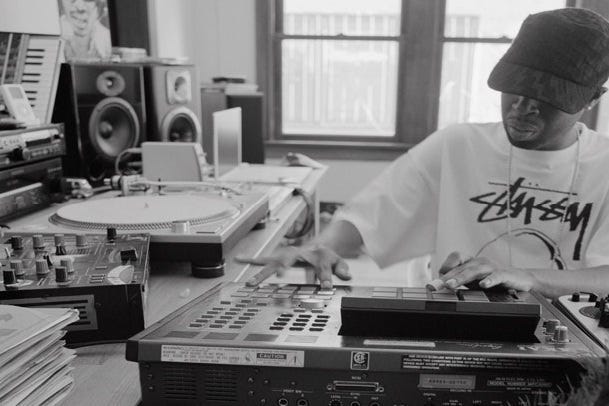




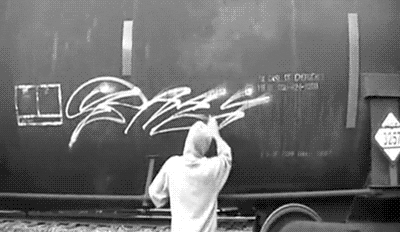
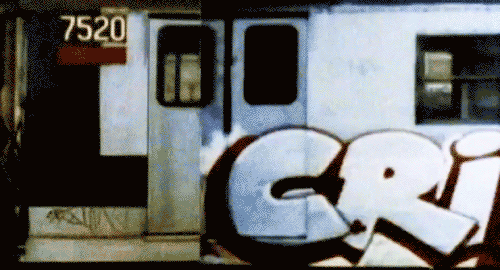

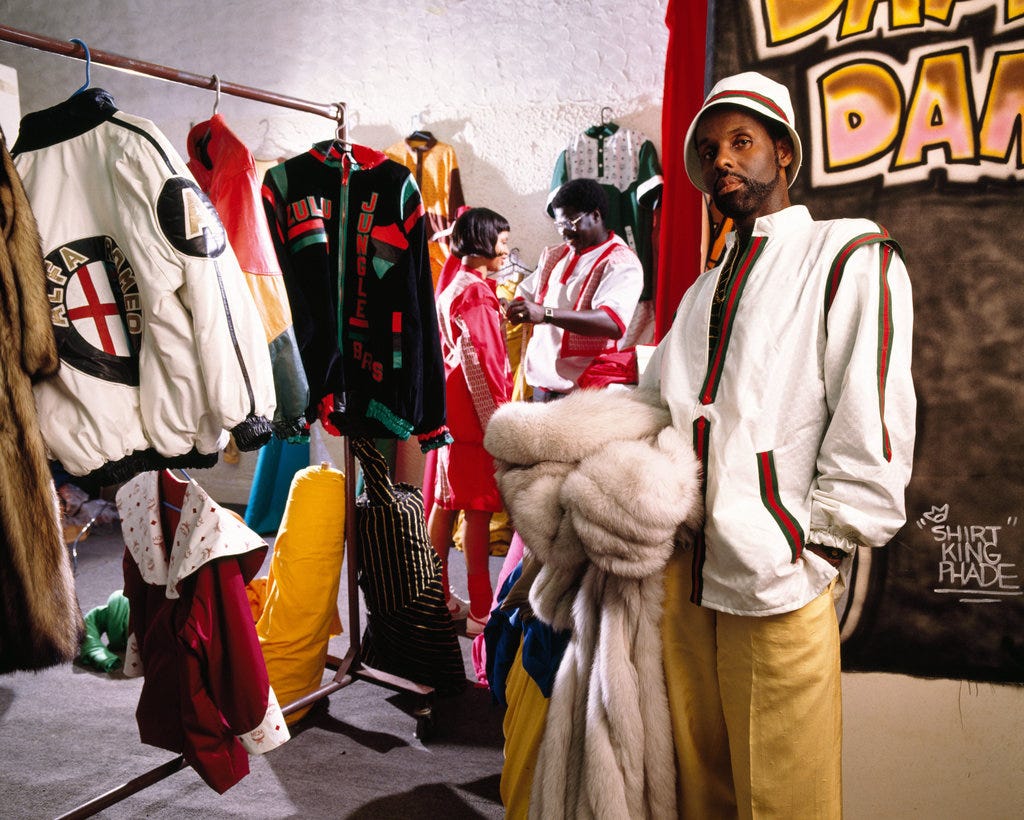
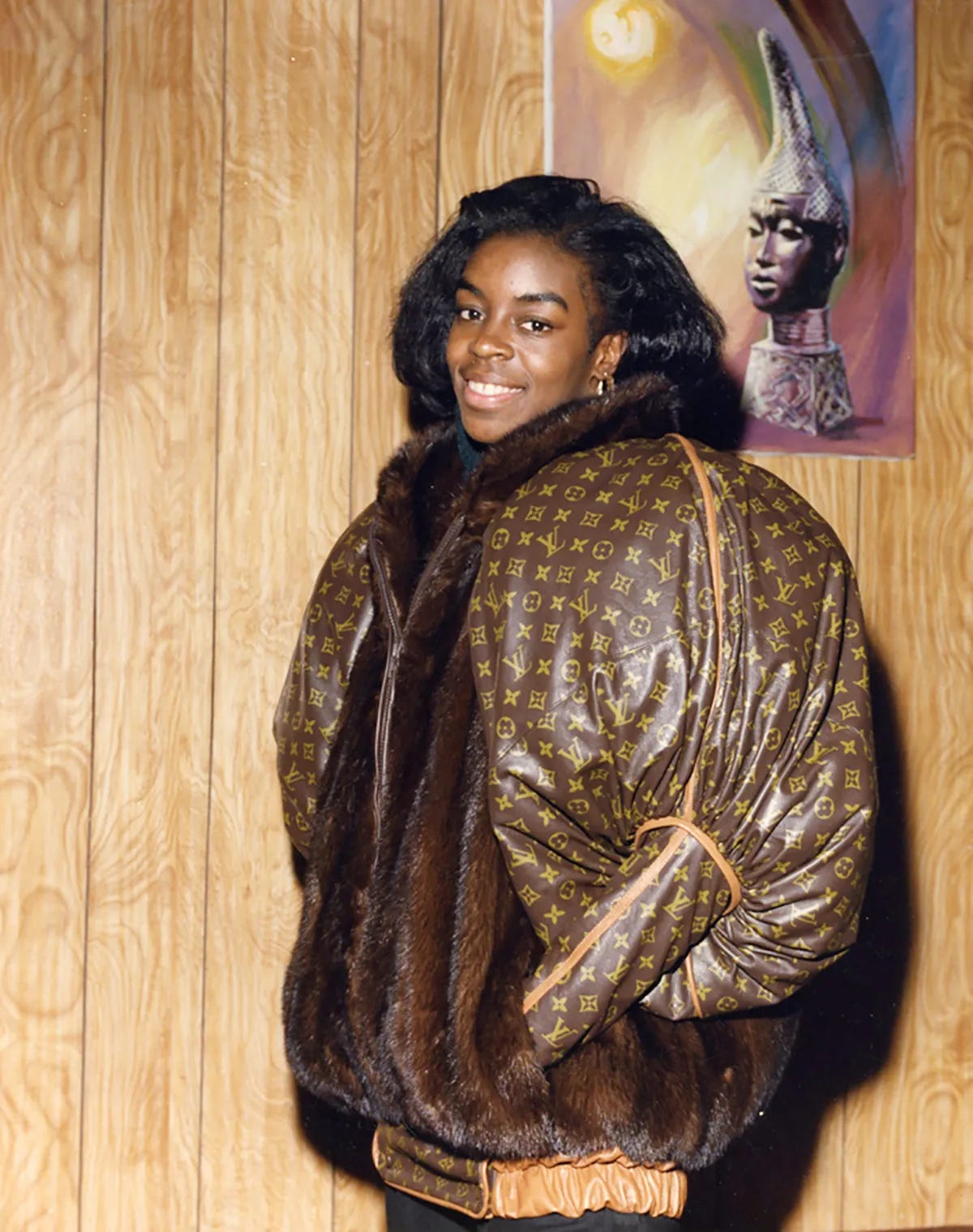
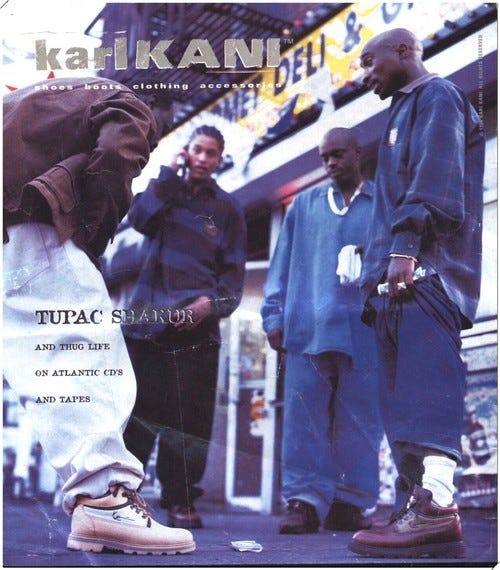
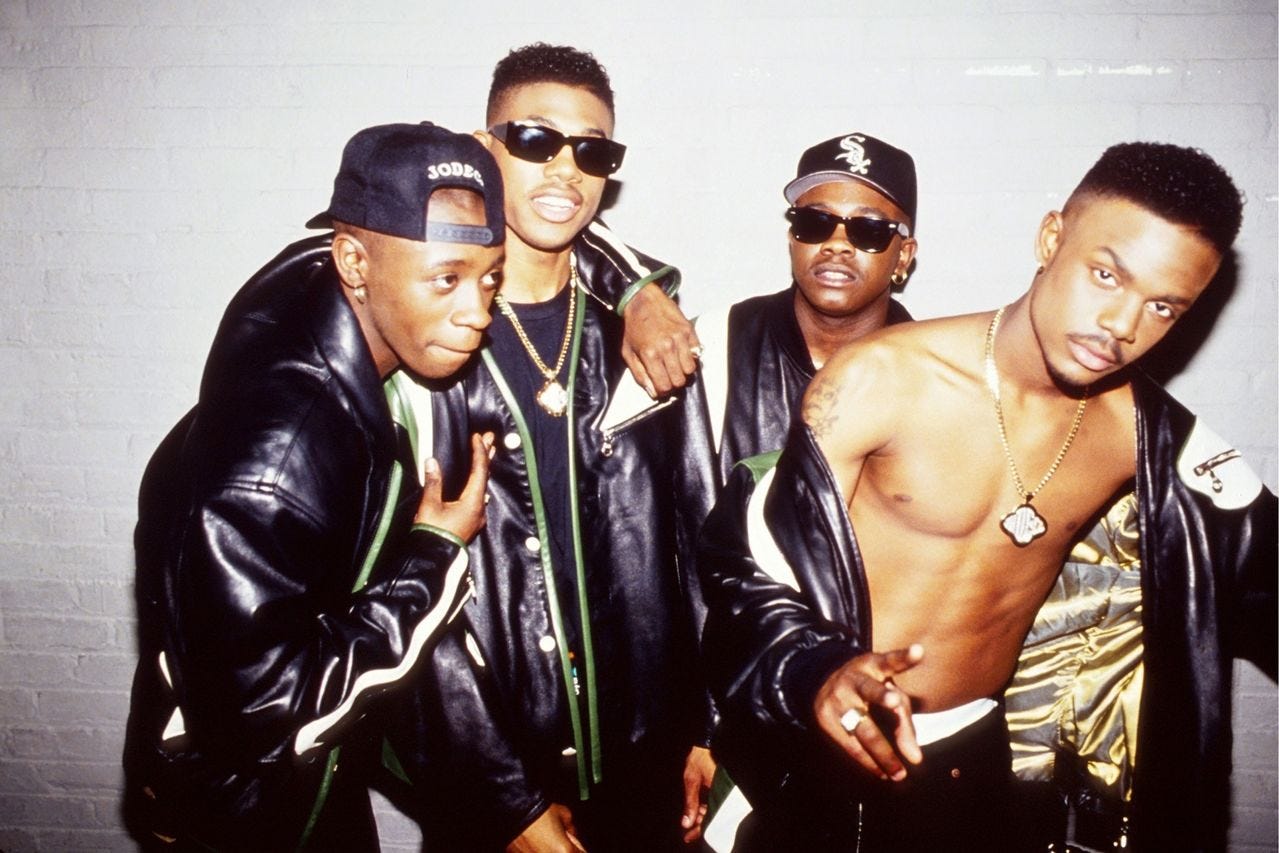
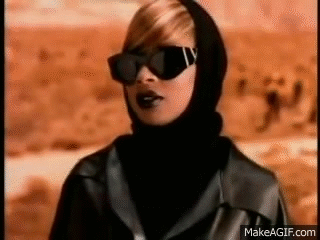


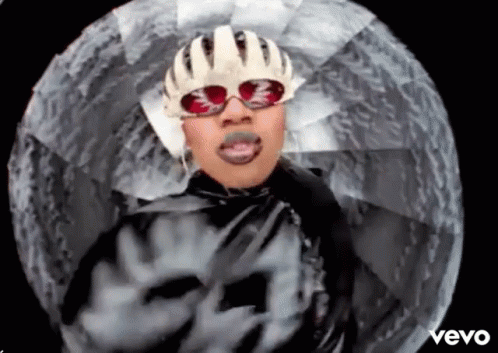

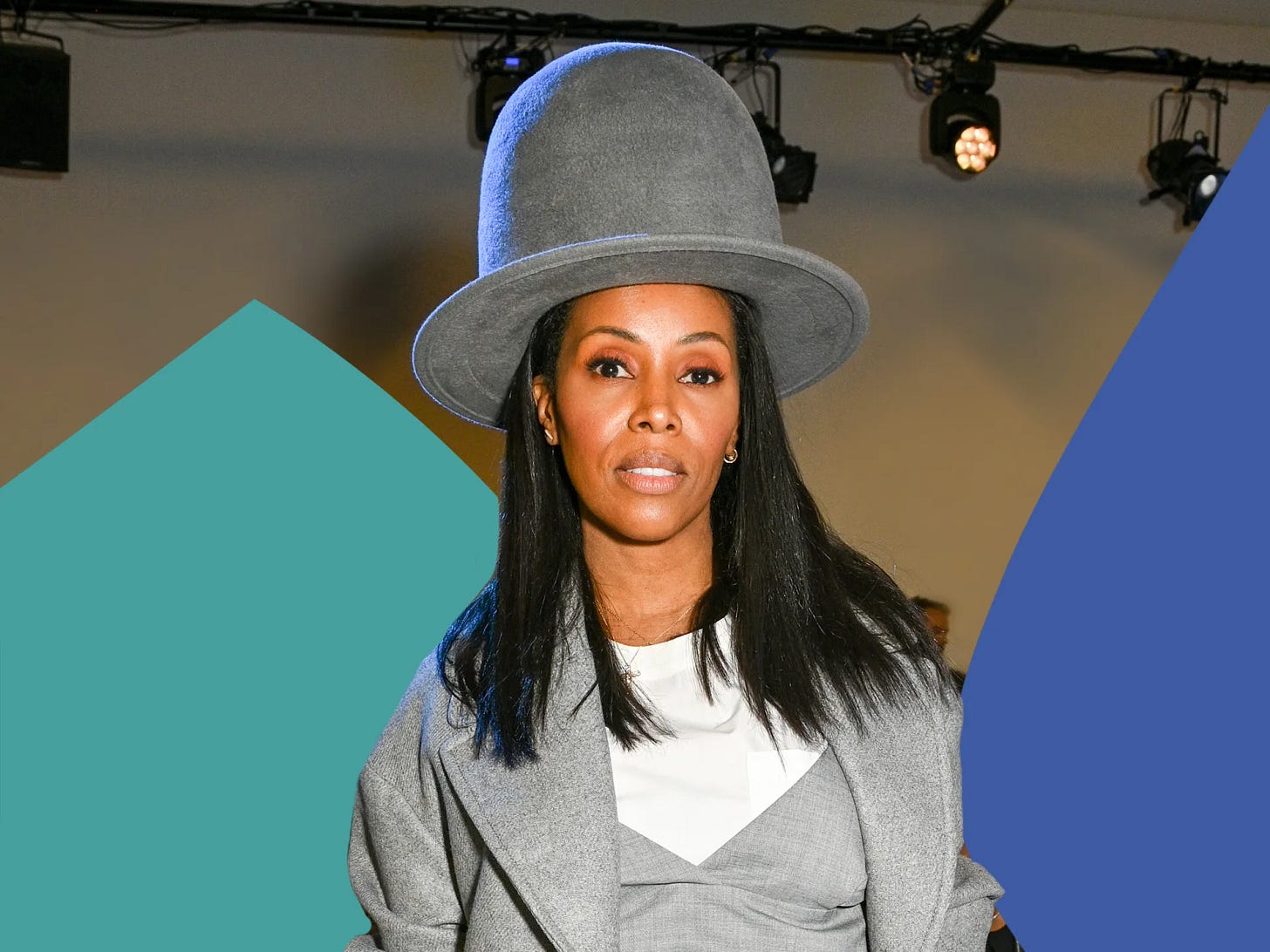
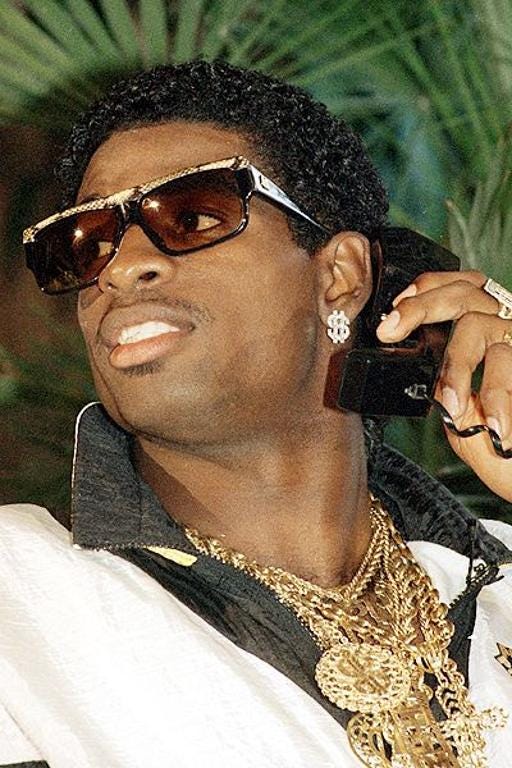
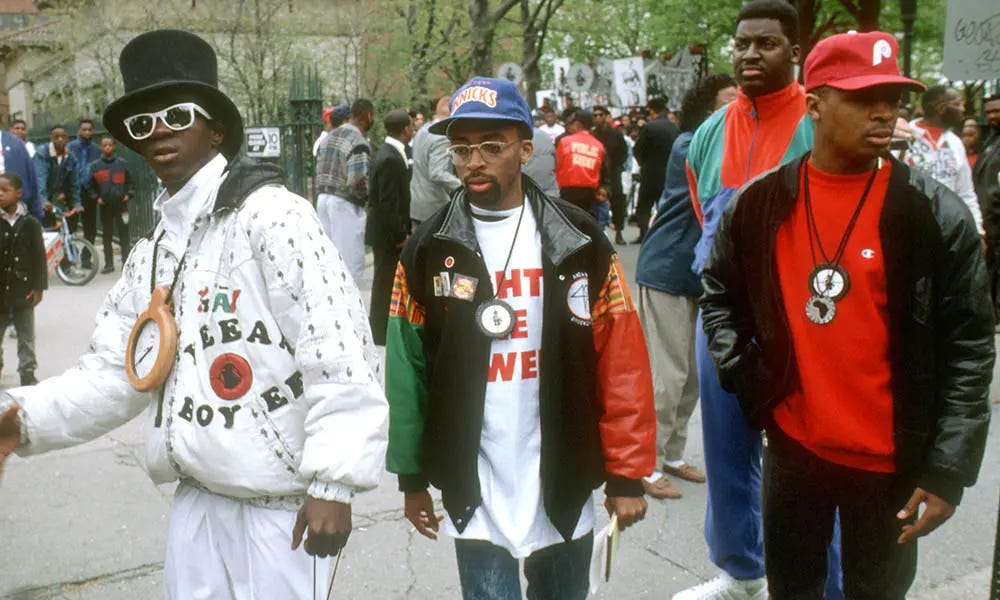
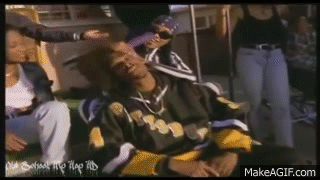


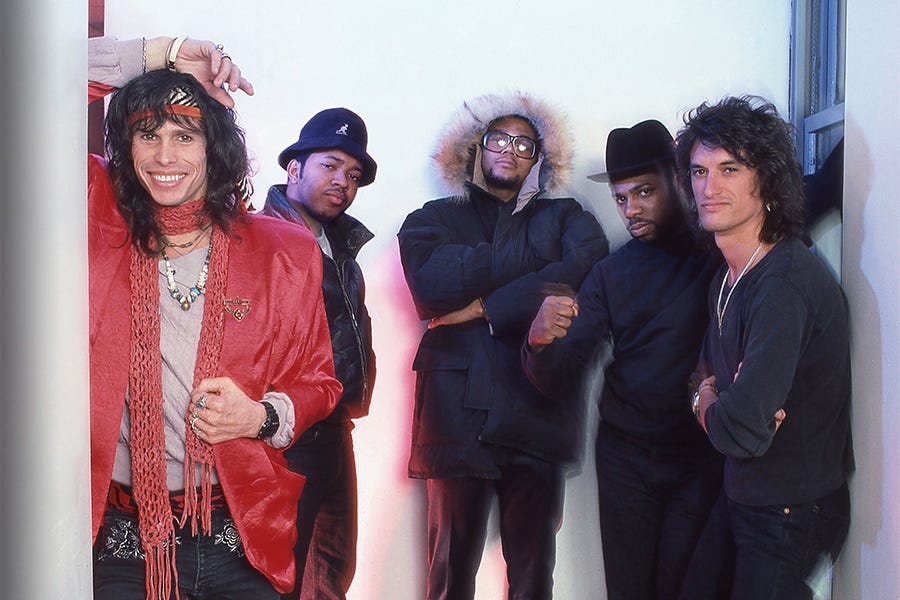



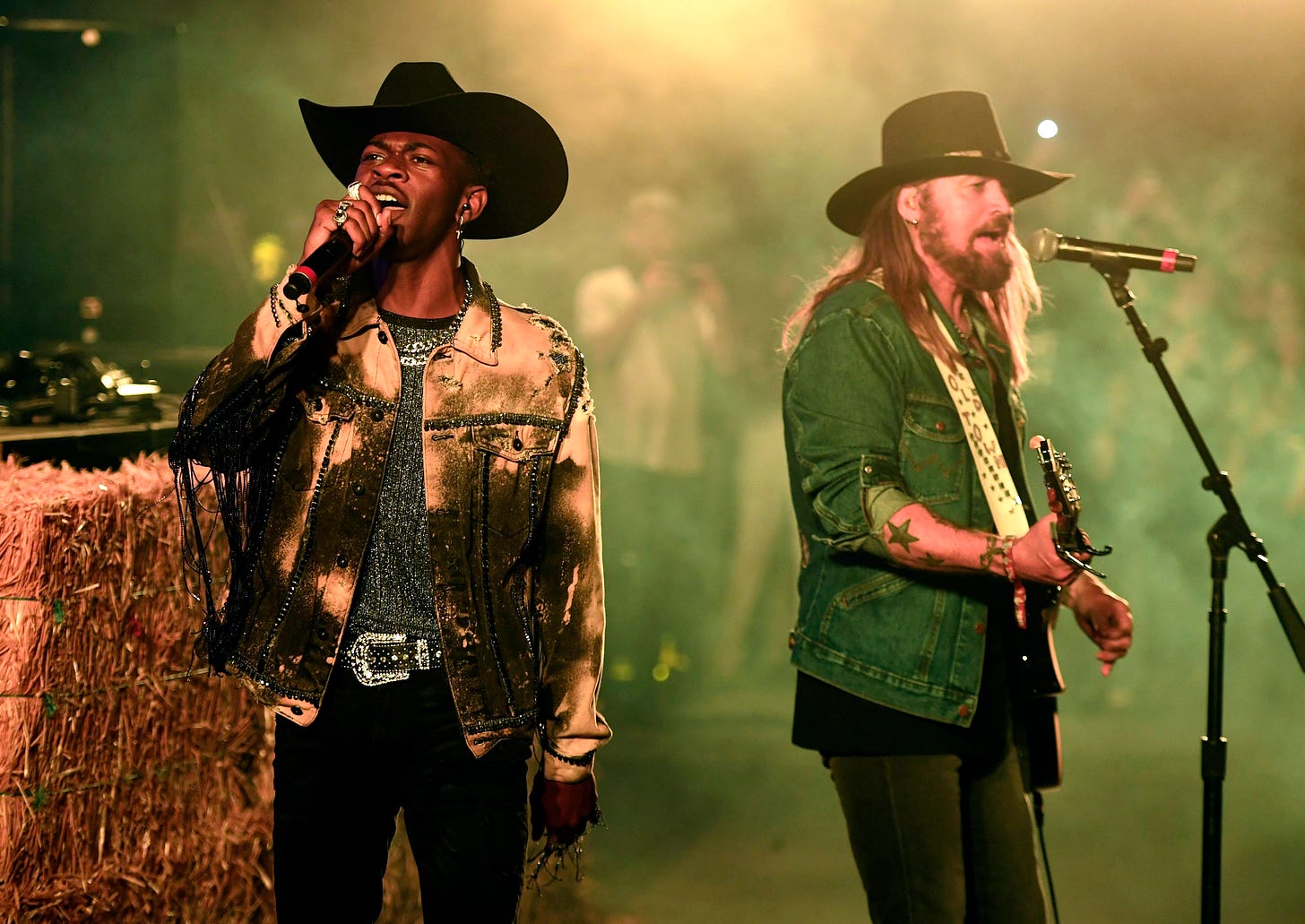


Ricky, how did you manage to make me feel old af and cool af at the same time! I love this piece!
👏🏽👏🏽👏🏽👏🏽👏🏽💕